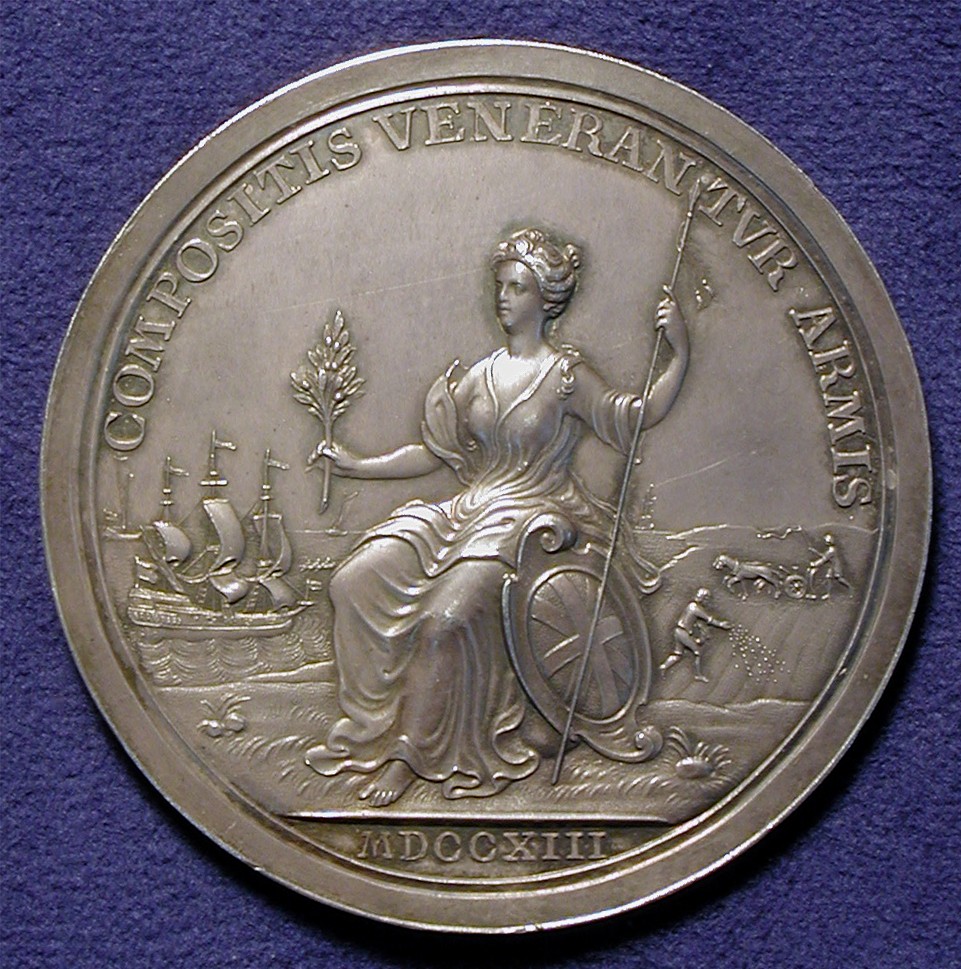

Historical and Commemorative
Medals
Collection of Benjamin Weiss


|
PEACE OF UTRECHT Croker, John: England, 1713, Silver, 58 mm The Peace of Utrecht was part of a series of individual peace treaties, signed in 1713 in the Dutch city of Utrecht, by several European states, including Spain, Great Britain, France, Portugal, Savoy and the Dutch Republic. It helped end the War of the Spanish Succession. The War of the Spanish Succession (1710-1714) was precipitated by the failure of the Habsburg King of Spain, Charles II (the last of the Spanish Habsburg kings), to produce an heir. Spain at that time controlled vast areas of the globe, some of which were claimed by other powerful European states, including the English and Dutch as well as the royal Houses of France (Bourbon), Austria (Habsburg), and Bavaria (Wittelsbach). After a series of battles, the Treaties of Utrecht were signed between the belligerents. The territorial changes effected by the series of Treaties of Utrecht were that Spain ceded the Spanish Netherlands, the Kingdom of Naples, the Duchy of Milan and the Kingdom of Sardinia to the Austrian Habsburgs. It also ceded the Kingdom of Sicily to the Duchy of Savoy and ceded Gibraltar and Minorca to Britain. France recognized British sovereignty over Rupert's Land and Newfoundland and ceded Acadia and its half of Saint Kitts to Great Britain. The Peace of Utrecht marked the end of two centuries of war. These wars, which devastated large parts of Europe, were based, in part, on antagonisms between the Catholic countries of Spain, France and the Holy Roman Empire, and the Protestant states of England and the Netherlands. Its resolution decided whether Europe would accommodate many religions and balances of powers or be monolithic. LINK to painting Allegory of the Peace of Utrecht by Antoine Rivaltz (Wikipedia). |
|